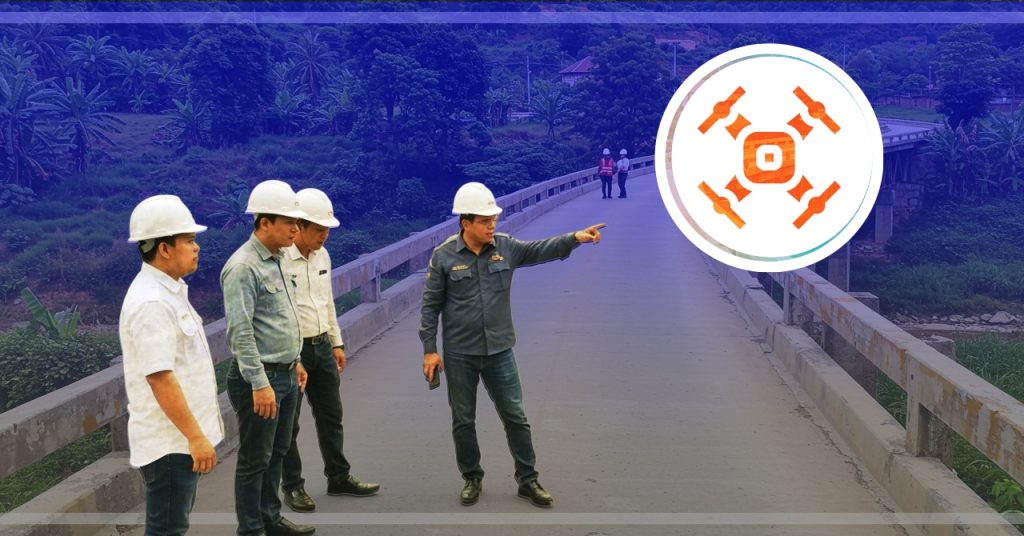Infrastructure safety is not just about building roads and bridges—it’s about ensuring they remain reliable over time.
Traditional inspections rely on manual labor, which can be time-consuming, expensive, and dangerous for engineers working in high-risk environments.
InfraspeX, an advanced AI-powered inspection tool, is changing that.
Developed by experts at MSU-IIT and backed by DOST-PCIEERD, this cutting-edge system integrates drones, artificial intelligence, and a user-friendly platform to conduct efficient, precise, and real-time assessments of infrastructure.
InfraspeX is designed for engineers, government agencies, and private contractors looking to enhance safety and efficiency in infrastructure maintenance.
It offers a cost-effective alternative to traditional methods by reducing labor-intensive work and minimizing human exposure to hazardous conditions.
Additionally, InfraspeX supports key government agencies responsible for infrastructure safety, including the Department of Public Works and Highways (DPWH) and the Department of Science and Technology (DOST), helping them streamline inspections and improve decision-making processes.

Challenges of Traditional Inspections
Road and bridge inspections have long relied on manual evaluations, requiring engineers to physically assess structures.
This method presents several challenges:
- Safety Risks: Inspectors work in dangerous environments, including high altitudes and unstable structures.
- Time-Consuming: Assessments can take days or weeks, delaying necessary repairs.
- High Costs: Labor, equipment, and logistical expenses add up quickly.
- Human Error: Manual inspections can be inconsistent, leading to overlooked structural defects.
These limitations make it essential to adopt more advanced, technology-driven solutions.
How InfraspeX Works
InfraspeX integrates three key technologies to improve infrastructure assessments:
1. Drone-Based Data Collection
Drones equipped with high-resolution cameras and LiDAR sensors capture aerial images of roads and bridges.
These UAVs access hard-to-reach areas, ensuring a comprehensive assessment without putting engineers in harm’s way.
2. AI-Powered Analysis
Advanced machine learning models analyze captured data to detect defects such as cracks, corrosion, and structural weaknesses.
AI algorithms improve accuracy and efficiency, reducing the likelihood of human error.
3. Web-Based Inspection Platform
Engineers and decision-makers can access inspection data in real time via a cloud-based platform.
The system allows for remote collaboration, instant reporting, and predictive analytics to plan maintenance effectively.

Benefits
1. Faster Inspections with Immediate Results
By automating the inspection process, InfraspeX significantly reduces the time required to evaluate roads and bridges.
Drones can scan an entire bridge in minutes, while AI quickly processes the data, providing immediate insights for engineers.
This means quicker identification of problems and faster decision-making for necessary repairs.
2. Enhanced Accuracy and Early Defect Detection
AI-driven inspections eliminate subjective assessments, ensuring consistency and accuracy in identifying structural damage.
With high-resolution imaging and predictive analytics, InfraspeX detects minor defects before they become major safety hazards.
This proactive approach prevents costly repairs and infrastructure failures.
3. Improved Safety for Inspectors and Engineers
Traditional methods require inspectors to climb structures or work near hazardous environments.
With InfraspeX, drones perform high-risk assessments, keeping engineers safe from potential accidents.
By reducing human exposure to dangerous conditions, the system minimizes workplace injuries.
4. Cost-Effective Infrastructure Maintenance
Government agencies and private contractors can save on operational costs by adopting AI-driven inspections.
Faster inspections, reduced labor requirements, and early defect detection lower long-term maintenance expenses.
InfraspeX helps allocate resources more efficiently, ensuring budgets are spent on critical repairs rather than emergency interventions.
Applications in Infrastructure Monitoring
InfraspeX isn’t limited to just one type of infrastructure.
Its capabilities extend to various sectors:
1. Bridge Inspections
- Detects cracks, corrosion, and material degradation.
- Identifies weak points in structural components.
- Provides 3D modeling for detailed assessments.
2. Road Condition Monitoring
- Analyzes pavement distress, potholes, and surface wear.
- Assesses road depth and material integrity using LiDAR.
- Helps prioritize maintenance schedules based on real-time data.
3. Disaster Response and Post-Incident Assessments
- Evaluates infrastructure damage after earthquakes, typhoons, or floods.
- Provides rapid assessment reports to aid reconstruction efforts.
- Enhances response times by delivering immediate insights.
4. Public Safety and Risk Mitigation
- Identifies vulnerabilities before they become hazards.
- Reduces the likelihood of accidents caused by structural failures.
- Improves overall safety standards for road users and communities.
Why Preventative Inspections Matter
Ignoring infrastructure maintenance can lead to devastating consequences.
Collapses, road failures, and structural weaknesses pose significant risks to public safety and economic stability.
By investing in preventative measures like InfraspeX, stakeholders can:
- Prevent major infrastructure failures before they occur.
- Reduce costly emergency repairs and reconstruction.
- Ensure safer roads and bridges for the public.
The Future of AI-Driven Infrastructure Inspections
As technology continues to evolve, AI-powered inspections will become the standard in infrastructure maintenance.
Future advancements may include:
- Enhanced AI Algorithms: Continuous improvements in defect detection and predictive analytics.
- Integration with Smart Cities: Real-time data sharing for more efficient urban planning.
- Automated Repair Recommendations: AI-driven insights that suggest maintenance solutions based on data analysis.
InfraspeX is leading the way in this transformation, providing a smarter, safer, and more cost-effective approach to road and bridge inspections.
Frequently Asked Questions
1. Who can use InfraspeX?
InfraspeX is designed for engineers, government agencies, and private contractors responsible for infrastructure maintenance and safety.
2. Does InfraspeX require special training?
While the platform is user-friendly, basic training is recommended for optimal use of drone technology and data interpretation.
3. How does InfraspeX handle extreme weather conditions?
The drones used in InfraspeX are built with protective shells and waterproof designs, ensuring effective performance in challenging environments.
4. How frequently should roads and bridges be inspected?
Regular inspections should be conducted at least annually, with additional assessments after extreme weather events or natural disasters.
Recent Updates
InfraspeX at Technology Transfer Conference 2025
On February 7, 2025, InfraspeX joined the Technology Transfer Conference 2025 at Chali Resort Acacia Ball in Cugman, Cagayan de Oro City. Led by founder Dr. Carl John O. Salaan and his team, they showcased the potential of InfraspeX during the Technology Pitching section. The event, organized by USTP and supported by DOST, brought together top innovators and leaders in the industry. InfraspeX gained valuable insights into emerging technologies, commercialization, and funding opportunities. The team expressed gratitude for the opportunity to be part of such a prominent event.
A Step Towards Smarter Infrastructure Maintenance
Engr. Irish Lariosa and Melody Maluya of InfraspeX participated in a consultative meeting with DPWH Regional Office in Cagayan De Oro on November 14, 2024. The InfraspeX Team introduced innovative technologies developed for the infrastructure industry. The discussion focused on insights and feedback to optimize the application of these technologies. The goal is to enhance infrastructure maintenance and ensure efficient management. The meeting highlighted the collaboration between InfraspeX and DPWH to bring about advanced solutions in the field.
Video: Next DPWH chief to continue partnering with private sector for infra projects | ANC
DPWH Chief Manuel M. Bonoan emphasized that public-private partnerships (PPPs) would continue to be a key component of the Marcos administration’s infrastructure program. He mentioned that the administration aimed to attract more investors for high-impact projects, focusing on those that were financially viable and could contribute to economic recovery. Bonoan also highlighted the importance of addressing corruption and ensuring the quality of infrastructure projects.
Conclusion
Road and bridge safety should never be compromised.
With InfraspeX, AI and drone technology are making inspections faster, safer, and more accurate than ever before.
By leveraging this innovation, engineers, government agencies, and contractors can enhance infrastructure longevity, reduce risks, and optimize maintenance efforts. Adopting AI-driven inspections isn’t just a technological upgrade—it’s a critical step toward building a safer future for everyone.